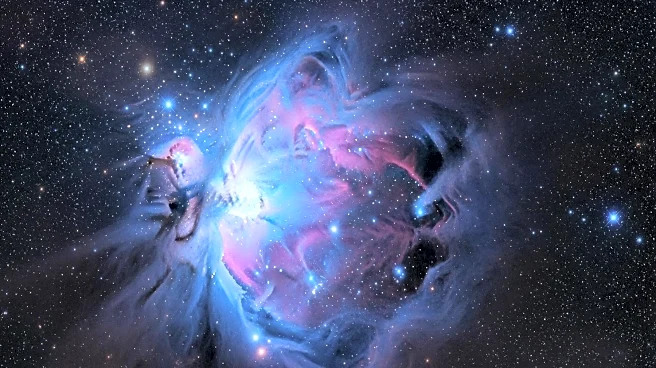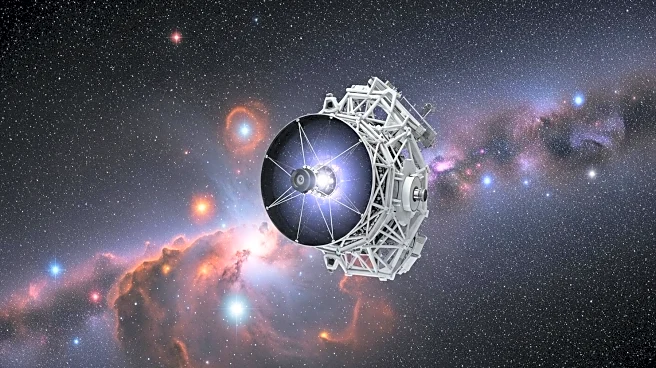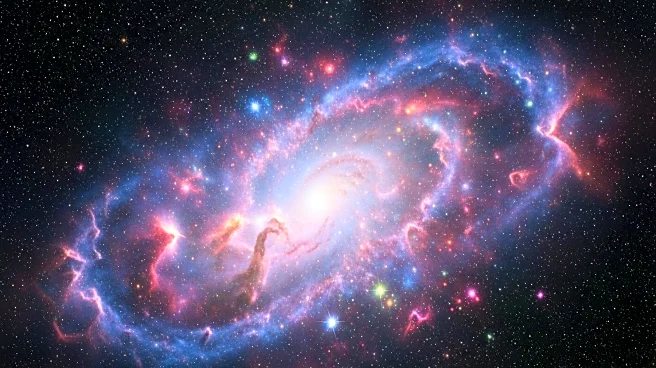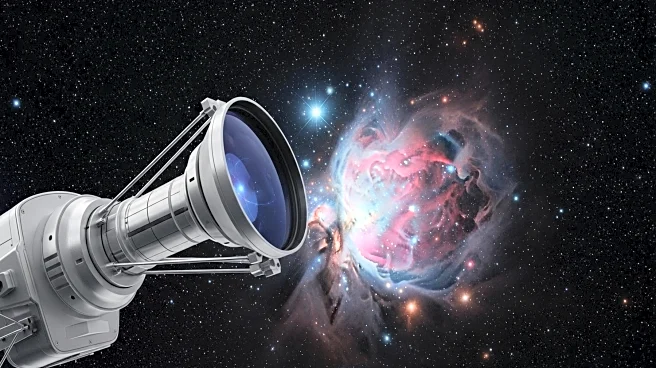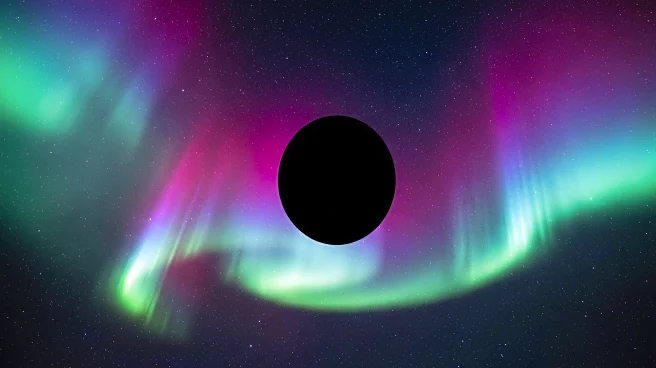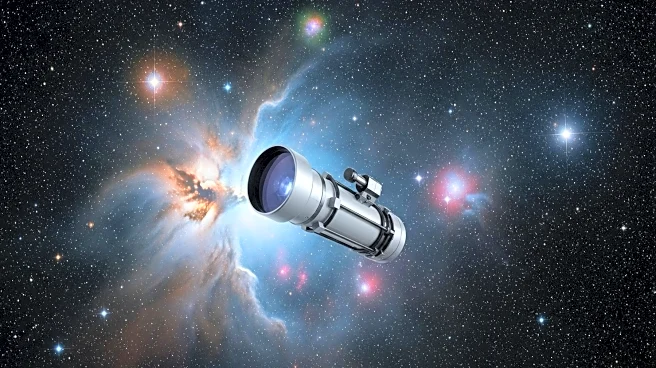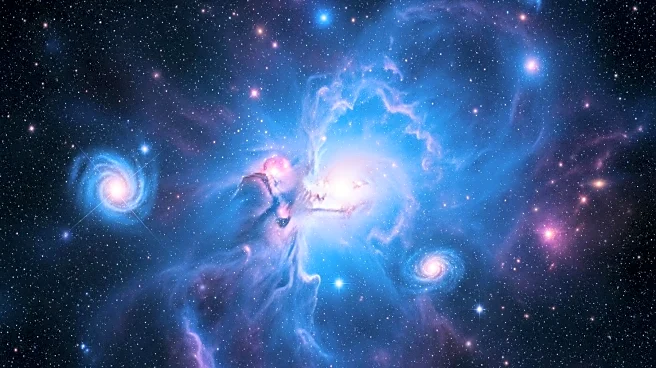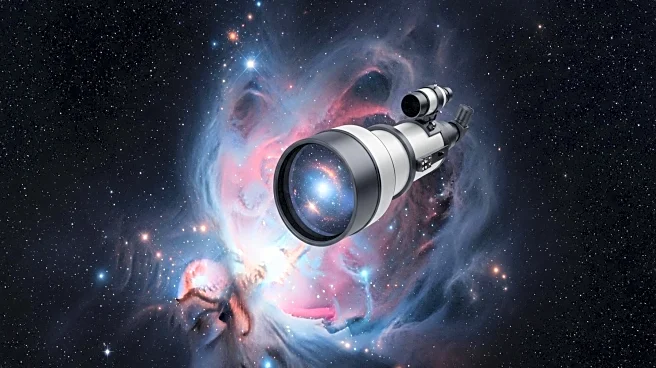What's Happening?
NASA's James Webb Space Telescope has provided unprecedented infrared views of Sagittarius B2, a dense molecular cloud near the Milky Way's center. Despite the presence of numerous stellar nurseries, the cloud exhibits inefficient star formation, containing only 10% of the gas found in the galactic center. This inefficiency is believed to be influenced by magnetic fields and the proximity to the central black hole, which may suppress gas collapse. The telescope's ability to detect chemical signatures within these clouds adds depth to the understanding of galactic evolution.
Why It's Important?
The findings from the James Webb Space Telescope offer new insights into the processes of star formation and the evolution of galaxies. Understanding the inefficiency in star formation within Sagittarius B2 could reshape theories about how galaxies mature over billions of years. This research is crucial for astronomers and space technology insiders, as it bridges observational gaps that previous instruments couldn't address due to dust obstruction. The data could influence models of star formation in other galaxies and inform studies on exoplanet habitability and the search for life beyond our solar system.
What's Next?
Future missions by the James Webb Space Telescope targeting similar regions promise further revelations. Insights from ongoing research suggest that the peculiarities observed in Sagittarius B2 might be common in active galactic nuclei, challenging existing theories. This could lead to advancements in infrared sensor technology, with applications extending to Earth-based observatories and future space telescopes. Collaborations between NASA, ESA, and the Canadian Space Agency continue to leverage Webb's data for simulations of galactic cores, potentially refining predictions about star formation rates in extreme environments.

